Infra
Unseen infrastructure: The underground networks that keep the world turning
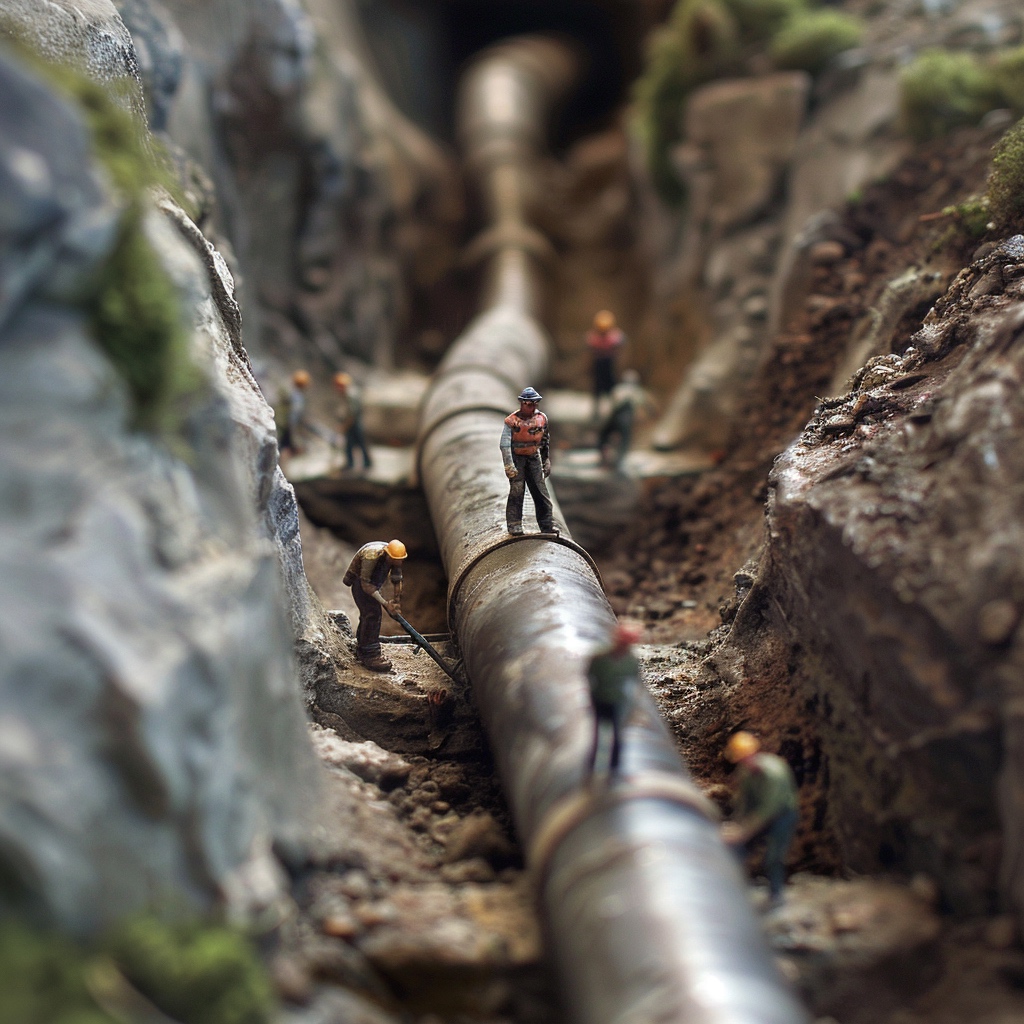
In a world where everything feels presented to us at all hours of every day – on our phones, our laptops, on billboards, in stores – it’s rare to find a bit of the world that still escapes our gaze. All around us exists an unseen world of labyrinths, sprawling and complex networks carrying vital resources for modern society. For the most part, we don’t even notice it until something goes wrong.
In fact, the sheer fact that this infrastructure is unseen is a marvel of modern engineering. Water infrastructure has always been a crucial aspect of civilization, but not too long ago, the world’s streets and houses were flush with clear evidence of water, both clean and dirty, from chamber pots to water carriages as recently as the mid-20th century all the way back to the open channel aqueducts of the ancient Roman empire. With this infrastructure now being hidden, we perhaps live in an era where water and its associated infrastructure is the most underappreciated it has ever been.
Let’s explore this unseen infrastructure and examine everything happening right beneath our feet, in our walls, under our roads, and throughout our cities.
Lifting up the need for water infrastructure
To non-water professionals, a lift station may look like a chain-link fence, some concrete slabs, a light, and a generator. Which it is, but water professionals know that below the ground lies a vital connection of sewer pipes and pumps which keep waste moving along to a treatment plant rather than backing up into your house. A lift station is a pumping station that moves wastewater from a lower elevation to a higher one. Installing them at key points in a pipeline system that relies on gravity helps move wastewater efficiently without having to build an even more extensive underground system, which can be extremely costly.
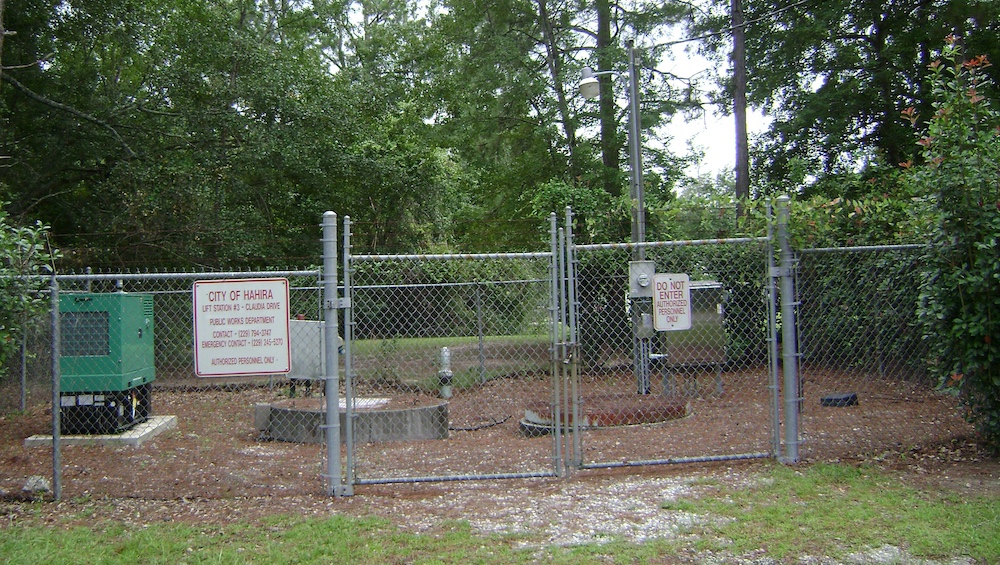
Most water infrastructure like this that is visible is dismissed because it isn’t glamorous. It can be grimy and unassuming, but it nonetheless holds up the sanitation of our modern society… for some of us.
Some 2.1 billion people still lack access to safe drinking water and 4.5 billion people still lack access to standard sanitation infrastructure. This lack of access to the unseen infrastructure we hold so dear is estimated to cause nearly 3 quarters of a million premature deaths annually, according to a report from the United Nations.
The global shortage of water infrastructure will require significant investment to hold back this slow-moving humanitarian crisis. Additionally, increased flooding and climate change poses significant risks to existing areas that already have access to modern water infrastructure. It requires upgrades, maintenance – more investment no matter how you measure it.
This is why it’s important that we “lift” this infrastructure into the light. Solving the problems we face relies on understanding the solutions we currently use.
Tracing a drop in the dark
The best way to think about today’s modern water infrastructure is to split it in two: clean (potable) systems and dirty (wastewater) systems. In order to understand, let’s trace a drop of water throughout each system.
Clean water infrastructure
In clean water systems, water is typically the product being delivered and thus, the infrastructure surrounding these systems involves gathering, purifying, and delivering said clean water to the buyer or user.
For clean water to arrive at the faucets of households and businesses around the world, it first needs to be extracted. This is either done through wells or from lakes or rivers. In certain areas where existing freshwater sources are scarce, we may see intake sources like the ocean, which requires desalination, or on an even smaller scale, rainwater collection.
Once water is collected, it then needs to be purified, usually done so through water treatment plants. These plants, run by thankless water treatment plant operators, take water that is usually rife with dirt and bacteria and run it through a series of treatment processes which remove these contaminants and purify the water. For a detailed look at this process, watch the video below.
Moving beyond treatment plants involves a series of large pump stations, water towers, millions of miles of pipes and junctions, valves, and sensors and monitors. Pipes are laid underground spanning from treatment plant to every various connection throughout a city.
Nowhere is the scale of this labyrinth of pipes and infrastructure as evident as underneath a typical city block of New York City.
If you live in a densely populated area like New York City, it’s astounding just how much water infrastructure exists under your feet. However, the scale of the matter is also well demonstrated in more rural environments. In sprawling American suburbs, miles of pipes often must be laid just to support one or two neighborhoods. In the photo below, you can see a trench being dug to lay a singular pipe for a suburb of Chicago.
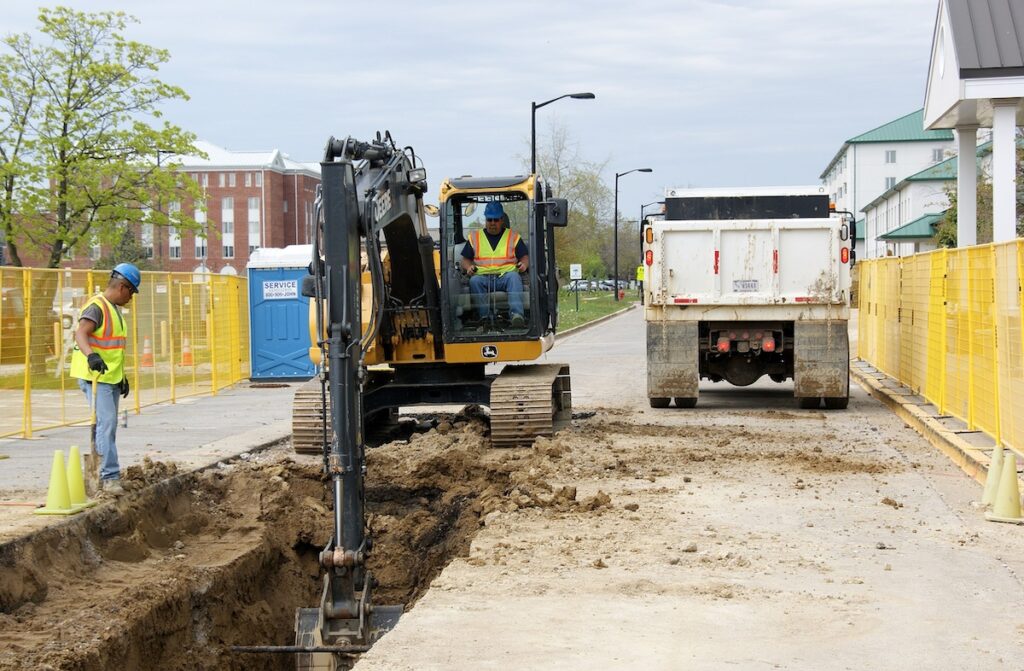
In addition to monitoring these pipes, engineers and operators must keep a close eye on the chemical concentrations in the water, as well as monitor pressure throughout the network to ensure it never falls below a minimum pressure, which keeps treated water safe from harmful infiltration into the pipes from external sources.
Additionally, potable water isn’t just a convenience, it’s a life-saving necessity. Clean water networks are used globally for extinguishing fires, putting such a heavy strain on water networks that engineers must model scenarios to ensure pressures and network operation remains stable even in high flow events. (These are called Fire Flow scenarios in the water industry.)
But what about leaks? Leak detection is another huge industry. Water network operators must consistently maintain this unseen infrastructure and find and fix leaks, which are notoriously difficult to locate seeing as how the pipes are underground. Some networks even use interesting tools, like Autodesk customer Davidson Water who employs the help of Puddles the leak detection dog.
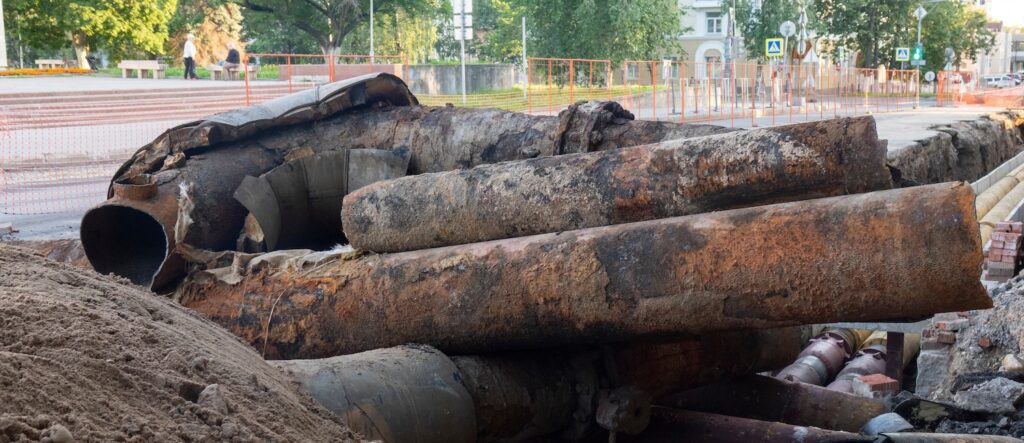
As you can see, the scale of work that water utilities, developers, and cities go to just to deliver water is vast. And we’ve only scratched the surface of potable water delivery. What about wastewater infrastructure?
Wastewater infrastructure
In wastewater systems, the outcome is usually the removal of water from a location, meaning that this infrastructure is focused on getting water away and either storing or treating it for release.
With wastewater collection, when water is used by households and businesses it usually leaves through drainpipes. This water is collected and routed to sanitary sewers running underground. Water professionals must also manage stormwater to prevent flooding. In newer infrastructure, stormwater is collected through stormwater pipes which are separated from sanitary sewer pipes. However, in older cities, combined sewer systems are common, taking in water from drainpipes from houses as well as flows from weather events.
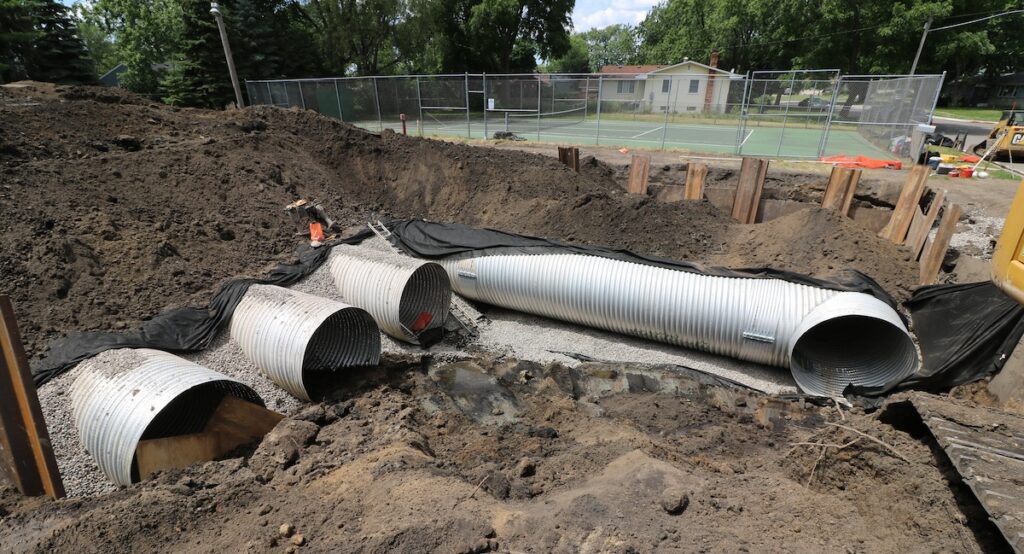
All of this wastewater, or non-potable water, needs to be safely routed to either a treatment plant or some location for discharge. In most places globally, water that contains human waste or other contaminants must be treated at a wastewater treatment plant before it can be discharged into the environment. But how does it get there?
As Isaac Newton discovered: gravity!
That’s right, nearly every sanitary sewer system globally is a non-pressurized gravity flow system, meaning that these pipes must always be arranged at an incline to keep the wastewater moving and flowing. You can imagine why engineers might want to utilize hydraulic modeling tools to model this ahead of time.
In areas where ground elevation simply isn’t cooperating, we’re left with the first infrastructure we mentioned in this post – lift stations. These lift stations pump the wastewater up to a higher elevation so it can continue flowing throughout the system to the wastewater treatment plant with gravity.
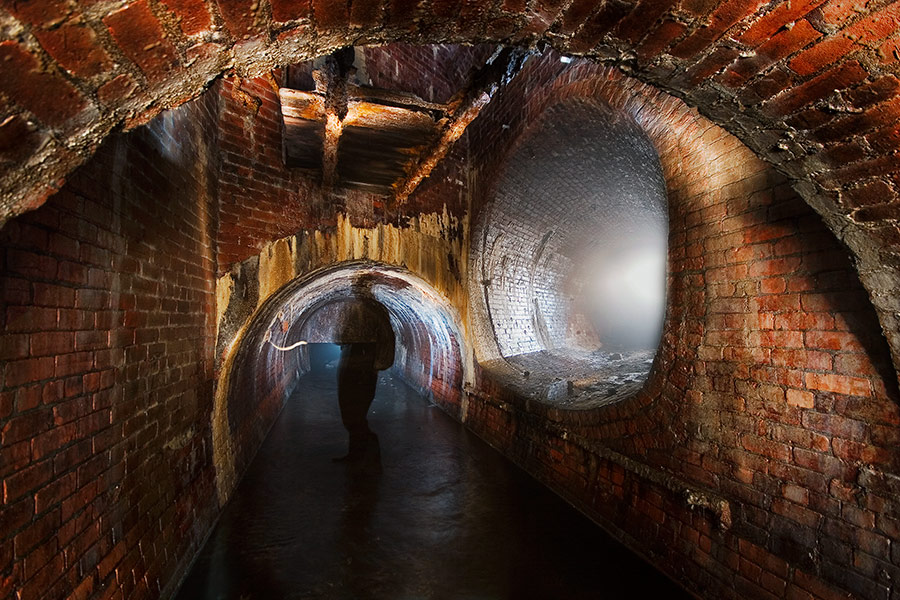
In wastewater networks, operators generally aren’t going to be concerned about chemical concentrations in the water as it flows throughout the pipes given that it’s already dirty, however these systems do still require monitoring.
For one, leaks in wastewater systems can be disastrous, spilling untreated sewage and other contaminants into populated areas or even worse, potable water sources. In combined sewer systems, this is known as a CSO, or combined sewer overflow, events which occur during heaving weather events as stormwater surges into the system and mixes with sewage. Sometimes these networks overflow during these events, which is never a desired outcome. This usually results in fines and fees for the operator.
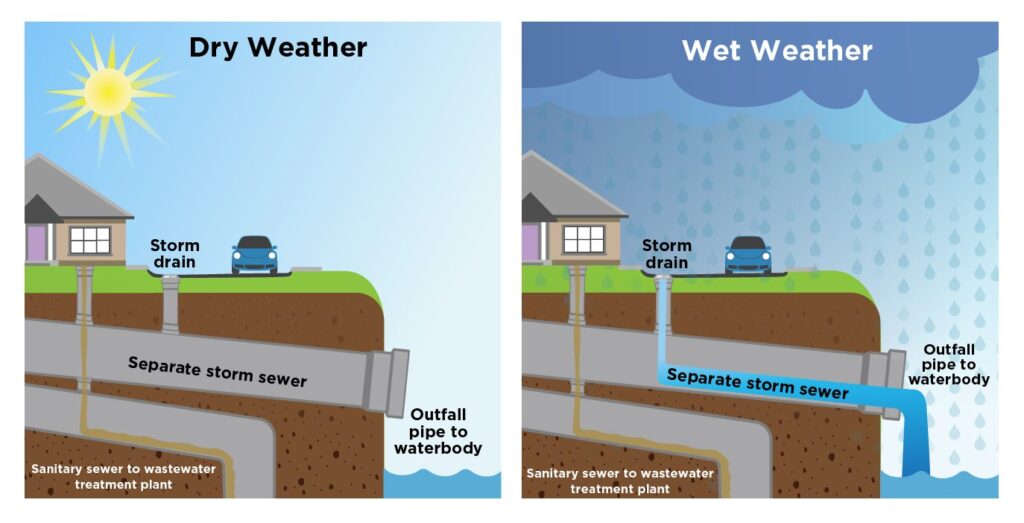
For two, wastewater systems must be monitored for dangerous levels of gases like hydrogen sulfide, which forms when sewage is agitated. In high enough concentrations, it can explode or kill people.
Coming back to the system as a whole, the final piece of infrastructure where this wastewater arrives is at the local treatment plant. Wastewater treatment plants collect all the sewage and wastewater in a city, treat it, and release this water, known as effluent, into local streams and waterways. Now, in most cases, water that leaves a wastewater treatment plant is not safe to consume, but it is safe to release into the environment, as monitored by a given area’s environmental agency. But what about the sparce pollutants left in the water after wastewater treatment? As my old environmental sciences professor would say, “Dilution is the solution to pollution.”
As the effluent is released, it mixes with other cleaner water and the pollutants dilute out to a safe degree within a measurable distance from the plant, a process that is very closely monitored.
To understand how wastewater treatment plants work, you can watch the following video.
We’ve walked through the basics of clean and dirty water networks with an overview of the unseen infrastructure needed to keep them supported. These networks are often composed of aging infrastructure and require significant amounts of upkeep, which costs a lot of money.
Maintaining the unseen
The US Environmental Protection Agency estimates that the country will need to spend more than $744 billion over the next decade on the US’s aging water infrastructure just to keep it running. While these numbers reflect estimates that are only focused on the United States, the story is similarly daunting around the world.
Maintaining water infrastructure is no easy task because, at its core, it is unseen. That means it usually needs to be dug up, inspected, and fixed, which involves a lot of site work and investment. However, it must be done. This is why when improvements are planned, they’re often being modeled well-beforehand using advanced hydraulic modeling software. In the hands of the right engineer, consultant, or hydraulic modeler, today’s tools can save cities and operators millions in upkeep costs by making the right infrastructure management and construction decisions early on.
With this infrastructure all going unseen, it becomes ever-more apparent that much of our modern world isn’t built on top of just dirt. The ground underneath us contains a maze of pipes and pumps, tubes and drains, and maintaining and improving it is the work of water infrastructure owners and operators across the globe.
If you’re one of those people who help keep our unseen infrastructure going – thank you for your service!






:max_bytes(150000):strip_icc()/roundup-writereditor-loved-deals-tout-f5de51f85de145b2b1eb99cdb7b6cb84.jpg)



